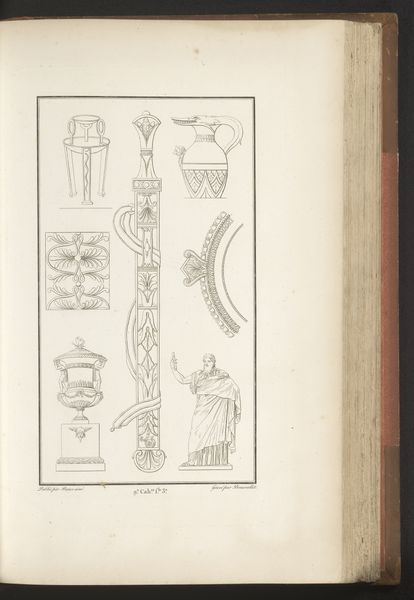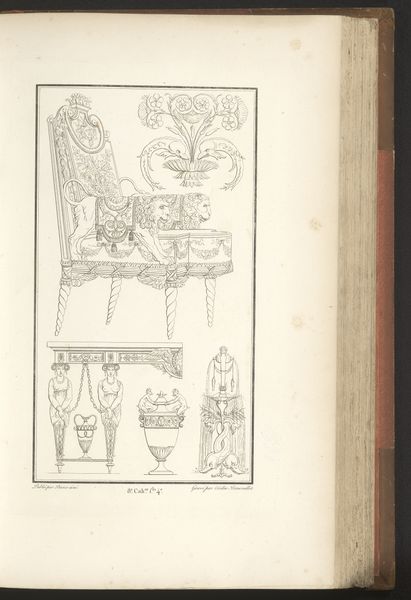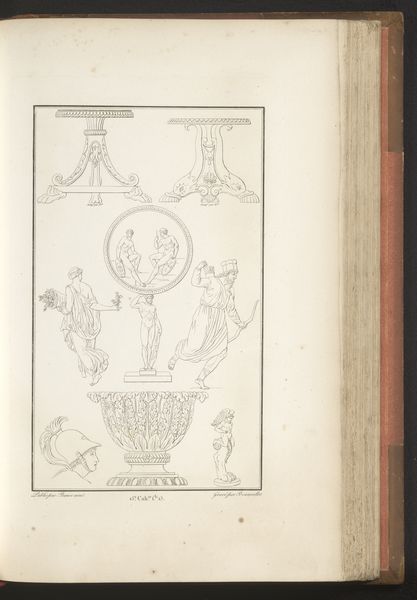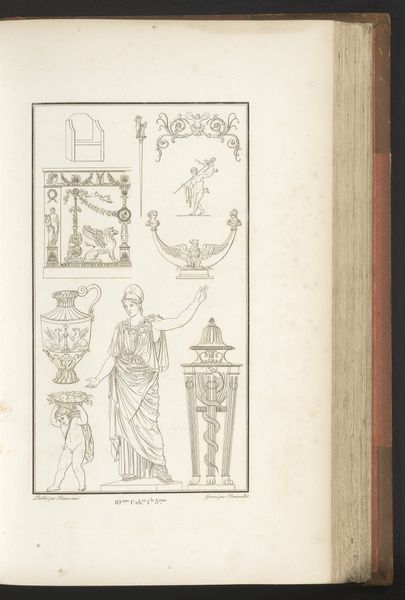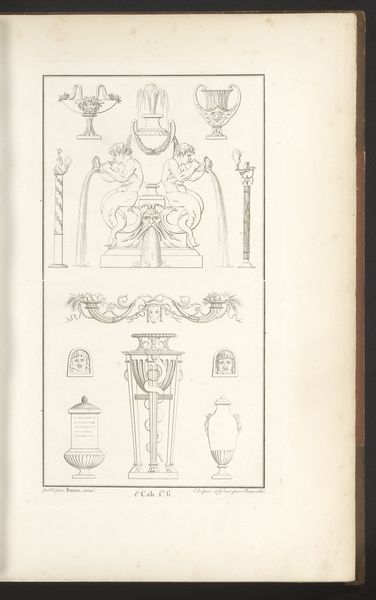
drawing, paper, ink
#
portrait
#
drawing
#
neoclacissism
#
classical-realism
#
figuration
#
paper
#
ink
#
geometric
Dimensions: height mm, width mm
Copyright: Rijks Museum: Open Domain
This array of ornamental drawings was made by Pierre-Nicolas Beauvallet, who died in 1818. What strikes me most are the forms lifted from antiquity: vases, floral arrangements, and figures evoking classical mythology, particularly the winged figure of Eros, or Cupid, the god of love. Note how this winged deity carries not a bow and arrow, but a covered vessel, its contents unknown. We see Eros, and we may think of love, desire, and even irrationality. The owl perched atop a Grecian urn symbolizes knowledge and wisdom. Yet, it is placed above an object often associated with mourning and remembrance. Consider how motifs such as Eros reappear throughout art history, from ancient Roman frescoes to Renaissance paintings. They are constantly being reinterpreted across time. Their emotional resonance persists because such iconography is rooted deep within the collective memory of Western culture. Symbols possess the power to bypass conscious thought. They engage us on a primal, emotional level, reminding us that history is never truly linear but a cyclical phenomenon. These images recur, evolve, and assume new meanings across epochs.
Comments
No comments
Be the first to comment and join the conversation on the ultimate creative platform.
